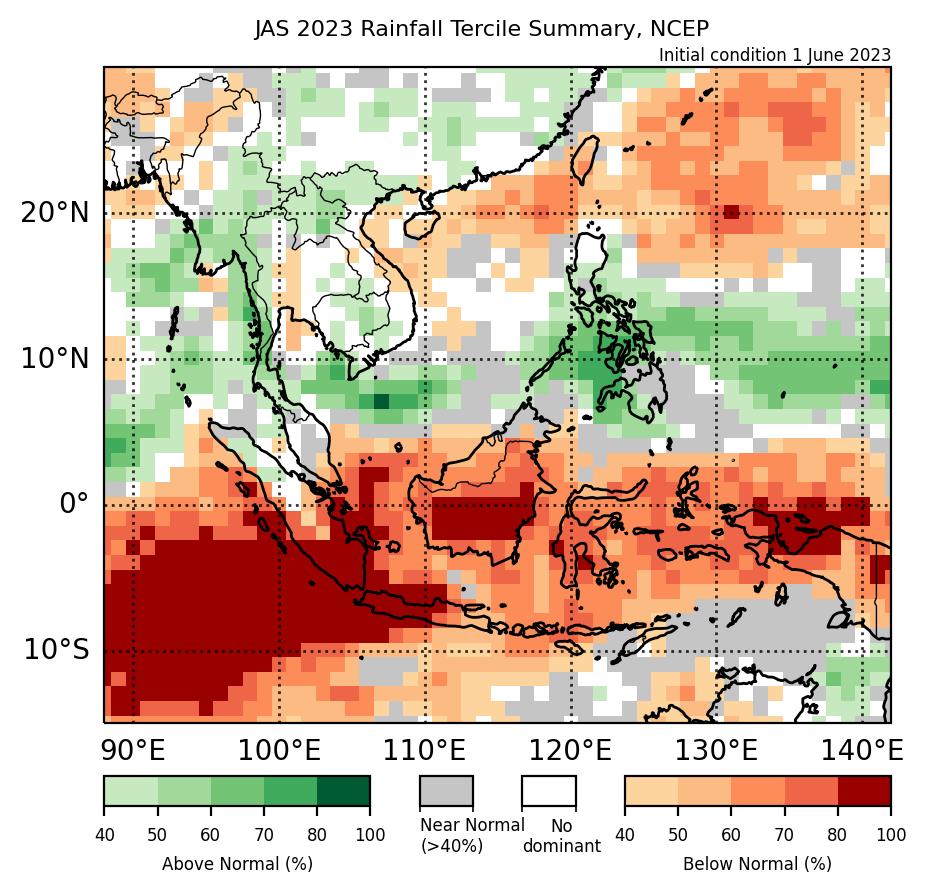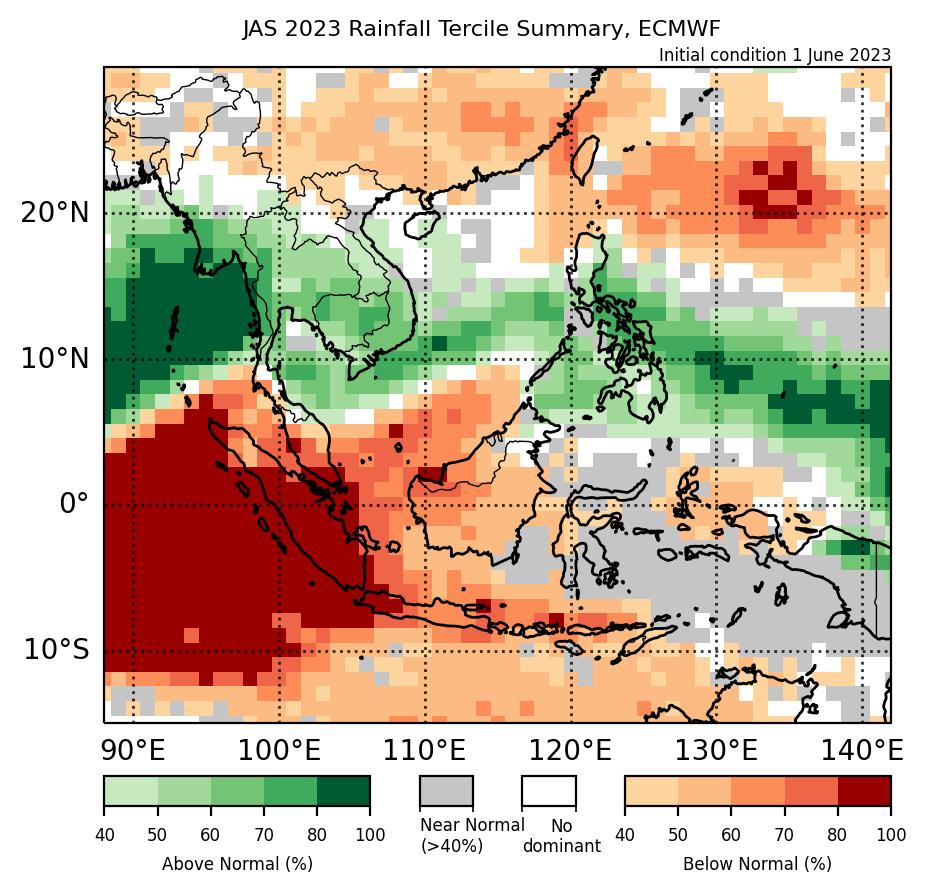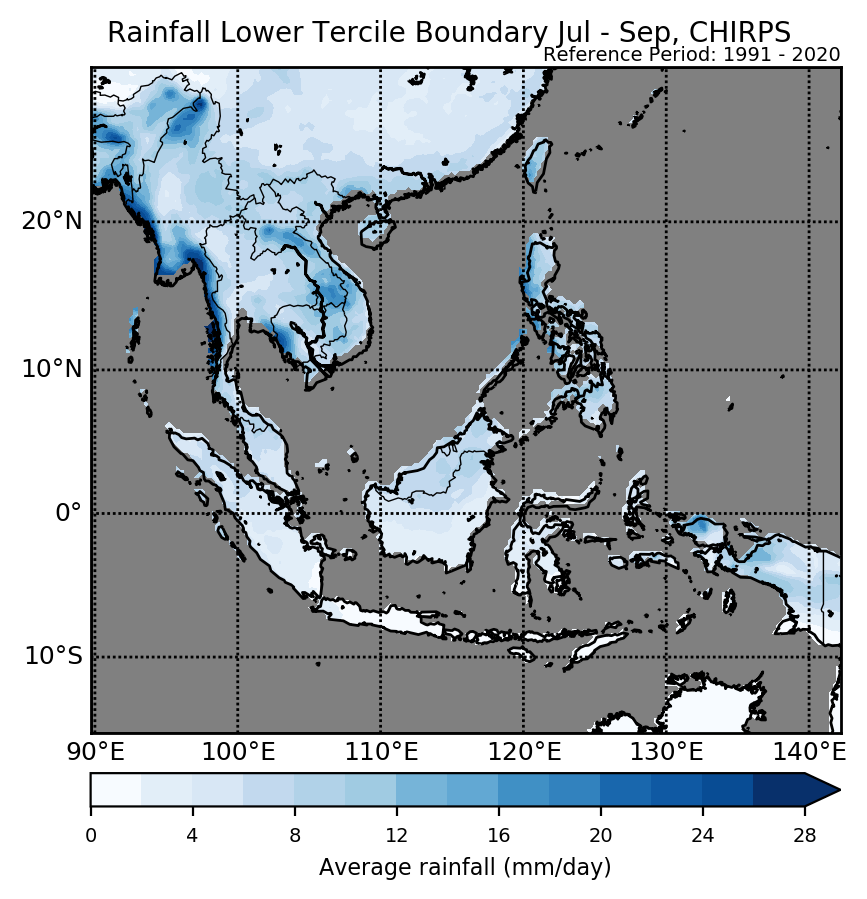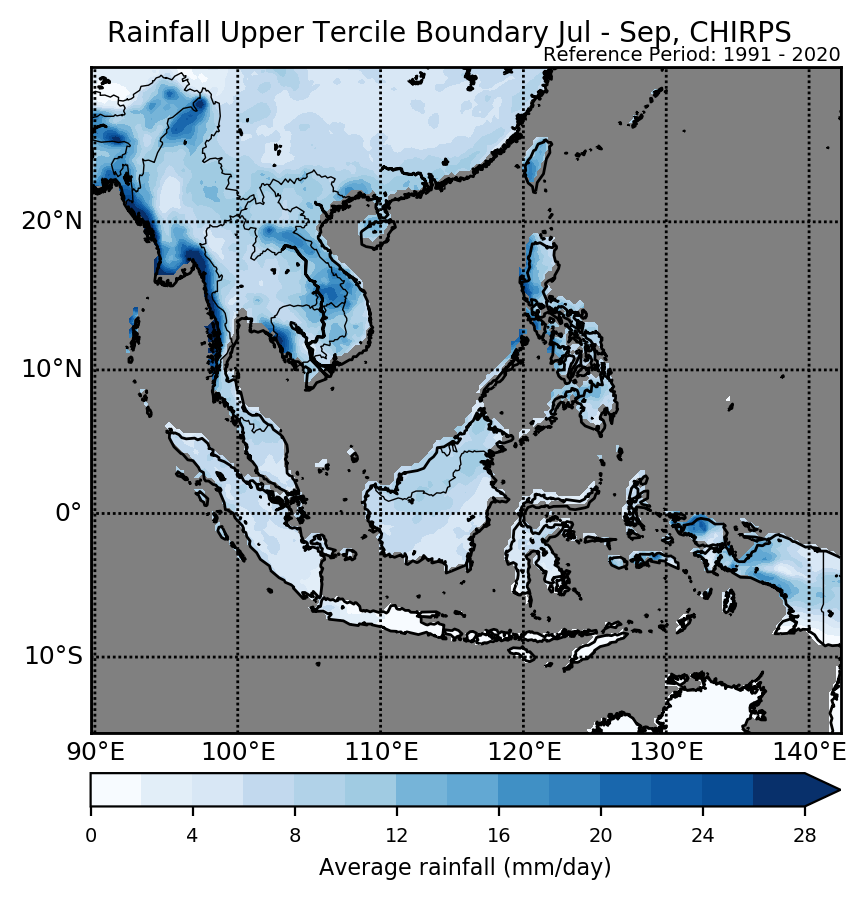Rainfall
Seasonal Rainfall Outlook: July-September 2023 (JAS)
Issued: 28 Jun 2023
For JAS 2023, models predict an increased chance of below-normal rainfall for much of the southern ASEAN region and above-normal rainfall over southern Mainland Southeast Asia.
For JAS 2023, below-normal rainfall is predicted for much of the southern ASEAN region based on the multi-model ensemble (Figure 4). The UK Met Office model (Figure 3) shows the highest confidence for below-normal rainfall over the mentioned region and followed by the NCEP model (Figure 1). The ECMWF model (Figure 2) predicts below-normal rainfall over the western and central Maritime Continent with near-normal rainfall over much of eastern Indonesia. Models’ skill is moderate to good skill for predicting below-normal rainfall over the southern ASEAN region.
For the northern ASEAN region, above-normal rainfall is predicted over southern Mainland Southeast Asia based on the multi-model ensemble (Figure 4). The ECMWF and UK Met Office models (Figures 2 and 3) predict above-normal rainfall over southern Mainland Southeast Asia, and the NCEP model (Figure 1) predicts above-normal rainfall over much of western Mainland Southeast Asia. Over the Philippines, the NCEP and ECMWF models (Figures 1 and 2) predict above-normal rainfall while the UK Met Office model (Figure 3) predicts a mix of below- to above-normal rainfall. There is either disagreement between the models or no dominant tercile predicted over the rest of Mainland Southeast Asia. The models’ skill is low to moderate over most of southern Mainland Southeast Asia and the Philippines, and low elsewhere in Mainland Southeast Asia.

Figure 1: Rainfall tercile summary predictions of NCEP model for JAS 2023 (contains modified Copernicus C3S information).

Figure 2: Rainfall tercile summary predictions of ECMWF model for JAS 2023 (contains modified Copernicus C3S information).

Figure 5: Average climatological rainfall's lower tercile boundary for JAS based on CHIRPS (Reference period: 1991-2020).

Figure 6: Average climatological rainfall's upper tercile boundary for JAS based on CHIRPS (Reference period: 1991-2020).
The qualitative outlook is assessed for the region in general. For specific updates on the national scale, the relevant ASEAN National Meteorological and Hydrological Services should be consulted.